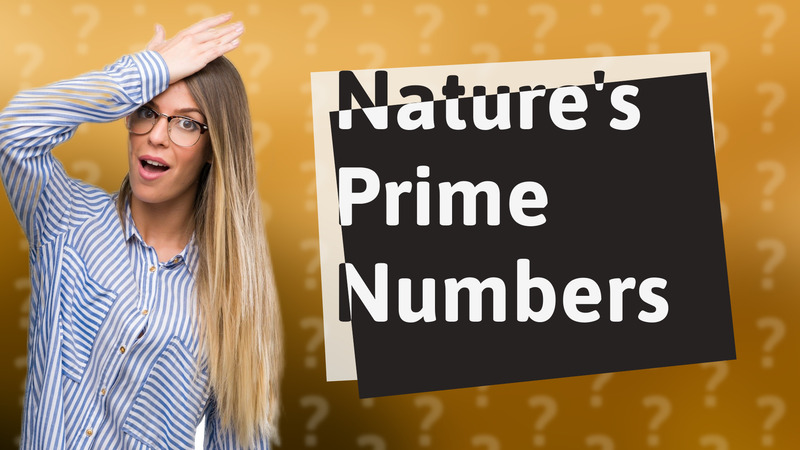
Explore the precision of atomic clocks and understand their role in measuring time accurately.

Discover why ice floats on water and learn about its density in this engaging Q&A video.

Discover the true relationship between E=mc² and Einstein's theory of relativity in this informative video.

Learn about the Colours of Sugar Test, a method to detect reducing sugars using Benedict's solution.

Discover how snowflakes are visible to the naked eye and learn about their intricate shapes and patterns.

Discover how long DNA can be detected in saliva after kissing and its implications for forensic science.

Discover Iron-60, the rarest iron isotope used in astrophysics and nuclear science for dating events.

Explore if Einstein's theory of relativity has been disproved and its ongoing significance in modern physics.

Discover how atomic clocks function and their role in precise timekeeping for GPS and science.

Uncover why atomic clocks are precise and safe without using radioactive material.

Discover why atomic clocks are the leading choice for precision timekeeping in science and GPS technology.

Explore the rarity of astatine, the rarest natural element on Earth, with only 25 grams found in the crust.

Discover how atomic clocks measure time using cesium and rubidium for unparalleled accuracy in scientific research and technology.

Learn the science behind clock accuracy with stable oscillators and synchronization methods for precise timekeeping.

Learn about antimatter, the rarest substance in the universe, and its fascinating properties and challenges in observation.

Discover how atomic clocks measure time using atoms like cesium and rubidium for precision.

Discover the truth about whether white is a color, including its scientific basis and significance in various fields.

Discover the first elements formed after the Big Bang and their significance in the universe's evolution.

Explore the fascinating reason why all snowflakes are hexagonal in structure, based on water's molecular properties.

Discover the truth about wormholes and their relation to Einstein's relativity in this insightful Q&A.

Discover why snow cannot form at temperatures above 0°C. Learn about the science of snow formation and temperature thresholds.

Delve into the intriguing concept of zero time and its implications in physics.

Discover atomic clocks—the pinnacle of timekeeping accuracy—vital for GPS, research, and global standards.

Discover how ice cools its surroundings by absorbing heat. Learn the science behind this phenomenon in our latest video!

Discover the scientific names of different types of worms, including the earthworm and more, and learn their classifications.

Discover Astatine, the rarest naturally occurring element on Earth, and learn about its unique properties and rarity.

Discover how atomic clocks measure time using atomic vibrations for incredible precision in technology.

Discover how clocks maintain accuracy with quartz crystals and atomic transitions. Learn about the technology behind precise timekeeping.

Explore atomic clocks, the most precise timekeepers we have. Learn how they function and their applications in GPS and research.

Discover the components of rocket fuel: liquid oxygen and hydrogen for liquid fuel, and powdered metals with oxidizers for solid fuel.

Explore why green does not absorb purple light and uncover the science behind color absorption.

Discover how snowflakes are visible and what makes their structure so unique.

Learn how atomic clocks work by measuring atomic oscillations for precise timekeeping.

Discover how lightning exhibits fractal geometry in its branching patterns and what this means for our understanding of nature.

Discover how atomic clocks validate Einstein's relativity theories through groundbreaking experiments like Hafele-Keating.

Discover why cesium 133 is essential for atomic clocks and their role in global timekeeping standards.

Explore why snowflakes can't produce rainbows and learn about light refraction in water droplets.

Discover why antimatter is the most costly material on Earth and its potential applications in various fields.

Explore the intriguing question of whether pink exists and how our brains perceive this unique color!

Discover the incredible precision of atomic clocks and their crucial role in GPS, research, and telecommunications.

Discover why antimatter is one of the most expensive substances on Earth, with costs reaching $62.5 trillion per gram.

Explore the fundamental principles of evolution and the Big Bang theory in this concise Q&A video.

Discover the truth about snowflake shapes—are they all hexagonal? Learn about the science behind their unique designs.

Discover why scientists believe no two snowflakes are identical due to unique formation conditions.

Discover the science behind snowflake uniqueness and why no two are alike. Learn about temperature, humidity, and their effects on snowflake shapes.

Explore how the Big Bang theory and evolution explain our universe and the process of life in this insightful video.

Discover why ice excels at cooling due to its energy absorption during melting.

Discover the explosive nature of hydrogen, including safety tips for handling and storage.

Discover how snowflakes, just like fingerprints, are unique due to their formation conditions. Learn more now!

Discover how atomic clocks achieve unparalleled accuracy in timekeeping using atomic vibrations. Ideal for GPS and scientific research.

Discover why atomic clocks are the world's most precise measuring instruments, essential for GPS and scientific research.

Discover why atomic clocks stand out as the most precise timekeeping technology used in GPS and scientific research.

Discover the science behind atomic clocks and how they provide unparalleled accuracy in timekeeping.

Discover the fascinating science behind snowflakes and their unique formation in this educational video.

Discover how thunderstorms can generate up to a billion volts, creating stunning lightning phenomena.

Explore the science behind twins and learn why boy-girl twins are never identical.

Discover how atomic clocks achieve unmatched precision in measuring time down to billionths of a second.

Learn about the first elements, hydrogen and helium, formed after the Big Bang and their role in shaping the universe.

Discover the science behind atomic clocks and their role in precise timekeeping for GPS and telecommunications.

Discover how atomic clocks accurately measure time through atomic vibrations and precision technology.

Discover the fundamentals of prime numbers and their significance in mathematics and beyond.

Learn about atomic clocks, the world's most precise timekeepers crucial for GPS and more.

Discover why sunlight is considered nonliving and its importance in biological processes like photosynthesis.

Discover why fruits are considered non-living despite being produced by living plants. Learn the science behind this fascinating topic.

Explore why ice, a solid form of water, is not classified as a living thing despite its intriguing properties.

Discover the key differences between fungi and plants, focusing on why mushrooms belong to the kingdom Fungi.

Explore why fungi were removed from the plant kingdom due to their unique characteristics and functions.

Discover the fascinating importance of prime numbers in nature and biology, from cicada life cycles to plant patterns.

Explore why rocks are considered non-living, their composition, and their role in the environment.

Discover the fascinating world of prime numbers and their importance in number theory and mathematical patterns.

Discover why fungi were misclassified as plants and learn about their unique characteristics. Understanding fungal classification.

Discover the key differences between fungi and plants, including nutrition and cellular structure.

Discover why fungi are not classified as plants and explore their unique kingdom and functions.

Explore whether super asymmetry is a real scientific theory or just a fictional concept from The Big Bang Theory.

Explore the fascinating reasons why every item on Earth is unique, despite appearances. Discover the science behind individuality!

Discover the true color of snowflakes and why they appear white to our eyes. Learn the fascinating science behind their beauty.

Discover the key differences between fungi and animals in this informative video on biology and classification.

Discover how gravity influences our daily lives through real-life examples and theories by Newton and Einstein.

Discover why antimatter is the rarest and most expensive material on Earth, produced in minute amounts with astronomical costs.

Discover the fascinating math and symmetry in snowflake structure. Learn about crystallography, geometry, and chaos theory!

Discover if fungi are living or nonliving and learn about their vital ecosystem functions.

Explore the potential of thorium as a nuclear fuel alternative to uranium, including its benefits and challenges.

Explore what makes fungi unique, from their chitin cell walls to their nutrient absorption methods.

Learn why no two snowflakes are identical – each forms under unique conditions resulting in distinct patterns.

Discover what a frozen snowflake is, exploring terms like snow crystal and ice crystal. Learn about its unique patterns!

Explore why sound is invisible to us, learn about sound waves and how they differ from light.

Discover why fungi differ from plants, including nutrition methods and cellular structures.

Discover why mushrooms belong to the fungi kingdom and not the plant kingdom.

Discover why mushrooms are not plants and learn about their unique characteristics as part of the Fungi kingdom.

Discover the debate: Are viruses life? Learn their characteristics and why they blur the line between living and non-living entities.

Discover 5 intriguing facts about fungi, their roles in ecosystems, and more. Learn how they impact our world!

Discover the shortest distance on Earth, from molecular scales to geographic realities.

Explore why fungi were classified as plants and how modern taxonomy distinguishes them into their own kingdom.

Discover the three main types of snowflakes: stellar dendrites, plate crystals, and columnar crystals, and their formations.

Learn about astatine, the rarest element on Earth, its properties, and where it can be found in minute quantities.

Discover the truth about human evolution and our relationship with fungi in this insightful Q&A.

Discover why fungi, once considered plants, were reclassified into their own kingdom despite sharing similarities.

Discover if humans evolved from fungi or not, and understand the evolutionary relationship between these two kingdoms.

Discover why snowflakes uniquely form with six sides based on water's molecular structure.

Discover why fungi are distinct from plants, focusing on characteristics like lack of chlorophyll and unique cell wall composition.